
Alligator is a feared animal in the wild, but makes a tasty menu item in restaurants or the home dinner table. Alligator farmers and cooks utilize many parts of the animal, including the jaw, tenderloin, body, tail and ribs. Alligator ribs are almost white in color with a texture similar to chicken and a mild flavor, despite its classification as a game animal. With some tasty additions and proven cooking methods you can make an alligator rib dinner to remember.
Prepping the Ribs
Like pork ribs or beef ribs, alligator ribs work well with a marinade or glaze to increase the flavor. Before you get going with your chosen cooking method, marinate your alligator ribs with flavors you and your guests find appealing. Options include a standard tomato-based barbecue sauce, a glaze made with marmalade and melted butter and a spicy chipotle sauce for added heat. Prepare your marinade, then pour it into a large, resealable bag. Place the ribs into the bag and seal the top, then shake it around until the ribs are completely coated. Set the bag in the refrigerator for up to 3 hours before cooking.
In the Oven
One cooking option is baking your alligator ribs in the oven. Since the ribs are lean and have the potential to dry out, wrap them in foil and set them on a baking sheet to bake slowly at 300 degrees Fahrenheit. Leave them in the oven to bake for up to 3 hours, until they are cooked through and tender. Remove the foil for the last 30 minutes or so and baste the ribs with your sauce to accentuate the flavor. You can also finish them in a smoker for 30 minutes, if you have access to one.
On the Grill
Cooking your alligator ribs on the grill brings out the smoky flavor and aroma associated with barbecuing. Preheat your grill to medium heat, then place your marinated ribs on the grill until they are cooked through and tender, basting often with leftover marinade. The grilling can take up to 45 minutes. Move the ribs away from direct heat if you find they are charring too fast or seem to be drying out. Turning off one side off the grill and moving the ribs over the side with no direct heat slows the cooking process, but still gives you a smoky grill taste.
Alligator Food Safety
Since alligator is a meat just like any other meat, you must exercise proper food handling rules from the start of the cooking process to the finish. Take the time to wash your hands after handling raw alligator meat before you touch anything else. Also, don't cut anything on the same board that you've used to cut the alligator ribs, and don't reuse any of the marinade that was in the bag with the raw alligator ribs. Slower cooking methods will ensure the ribs are cooked completely through; for any cooking method, aim for an internal temperature of 160 F.
Related Articles
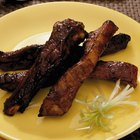
How to Cook Country Ribs on the Inside
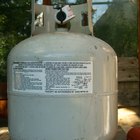
How to Barbeque a Brisket on a Gas Grill

How to Steam Pork Ribs
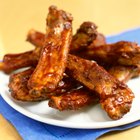
How to Bake Spare Ribs Before BBQing

How to Cook Wild Boar Ribs
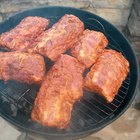
How to Smoke Ribs With a Gas Smoker
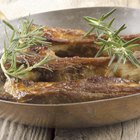
How to Sear Ribs
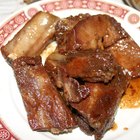
How to Grill Ribs on a Charcoal Grill
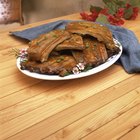
How to Cook Pork Ribs on a Propane Grill
How to Cook Pork Spare Ribs on a ...
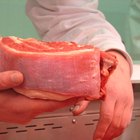
How to Cook Brisket on a Propane Grill
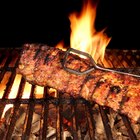
How to Cook Marinated Beef Back Ribs

Perfect Way to Cook a Pork Chop in the ...
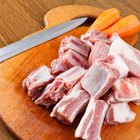
How to Cook Spare Ribs in a Rotisserie

How to Cook a Chuck Short Rib
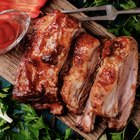
How to Bake Pork Ribs in a Turkey Bag
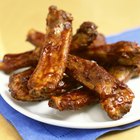
How to Cook BBQ Pork Ribs Quickly
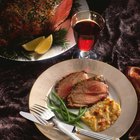
How to Grill a Boneless Leg of Lamb ...
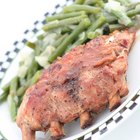
How to BBQ Ribs on a Smoker
Easy Cooking for Pork Spareribs
References
Writer Bio
Joshua McCarron has been writing both online and offline since 1995. He has been employed as a copywriter since 2005 and in that position has written numerous blogs, online articles, websites, sales letters and news releases. McCarron graduated from York University in Toronto with a bachelor's degree in English.
Photo Credits
Tom Brakefield/Stockbyte/Getty Images